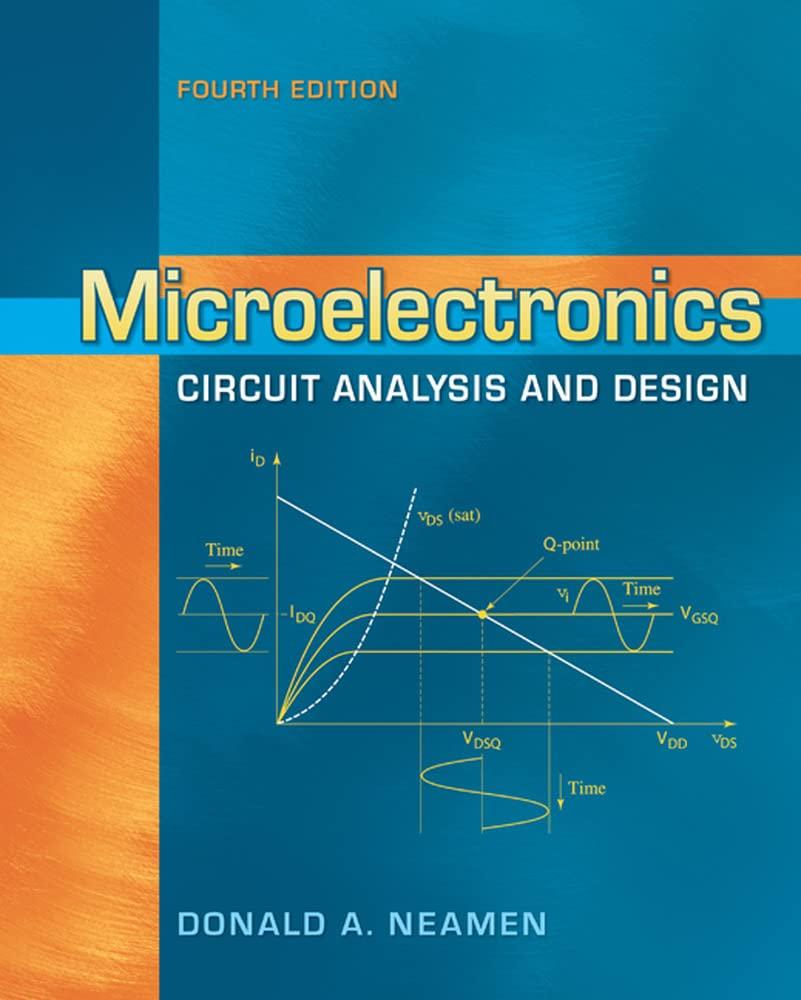Consider the fully cascoded diff-amp in Figure 11.37. Assume (I_{Q}=80 mu mathrm{A}) and transistor parameters of: (V_{T
Question:
Consider the fully cascoded diff-amp in Figure 11.37. Assume \(I_{Q}=80 \mu \mathrm{A}\) and transistor parameters of: \(V_{T N}=0.8 \mathrm{~V}, k_{n}^{\prime}=60 \mu \mathrm{A} / \mathrm{V}^{2}\), \(\lambda_{n}=0.015 \mathrm{~V}^{-1}, V_{T P}=-0.8 \mathrm{~V}, k_{p}^{\prime}=25 \mu \mathrm{A} / \mathrm{V}^{2}\), and \(\lambda_{p}=0.02 \mathrm{~V}^{-1}\). The transistor width-to-length ratios are \(W / L=60 / 4\) for transistors \(M_{1}-M_{4}, W / L=40 / 4\) for transistors \(M_{5}-M_{6}\), and \(W / L=4 / 4\) for transistors \(M_{7}-M_{8}\).
(a) Determine the output resistance of the diff-amp.
(b) Calculate the differential-mode voltage gain of the diff-amp.
(c) Find the common-mode voltage gain of the diff-amp using a computer simulation.

Step by Step Answer:

Microelectronics Circuit Analysis And Design
ISBN: 9780071289474
4th Edition
Authors: Donald A. Neamen





